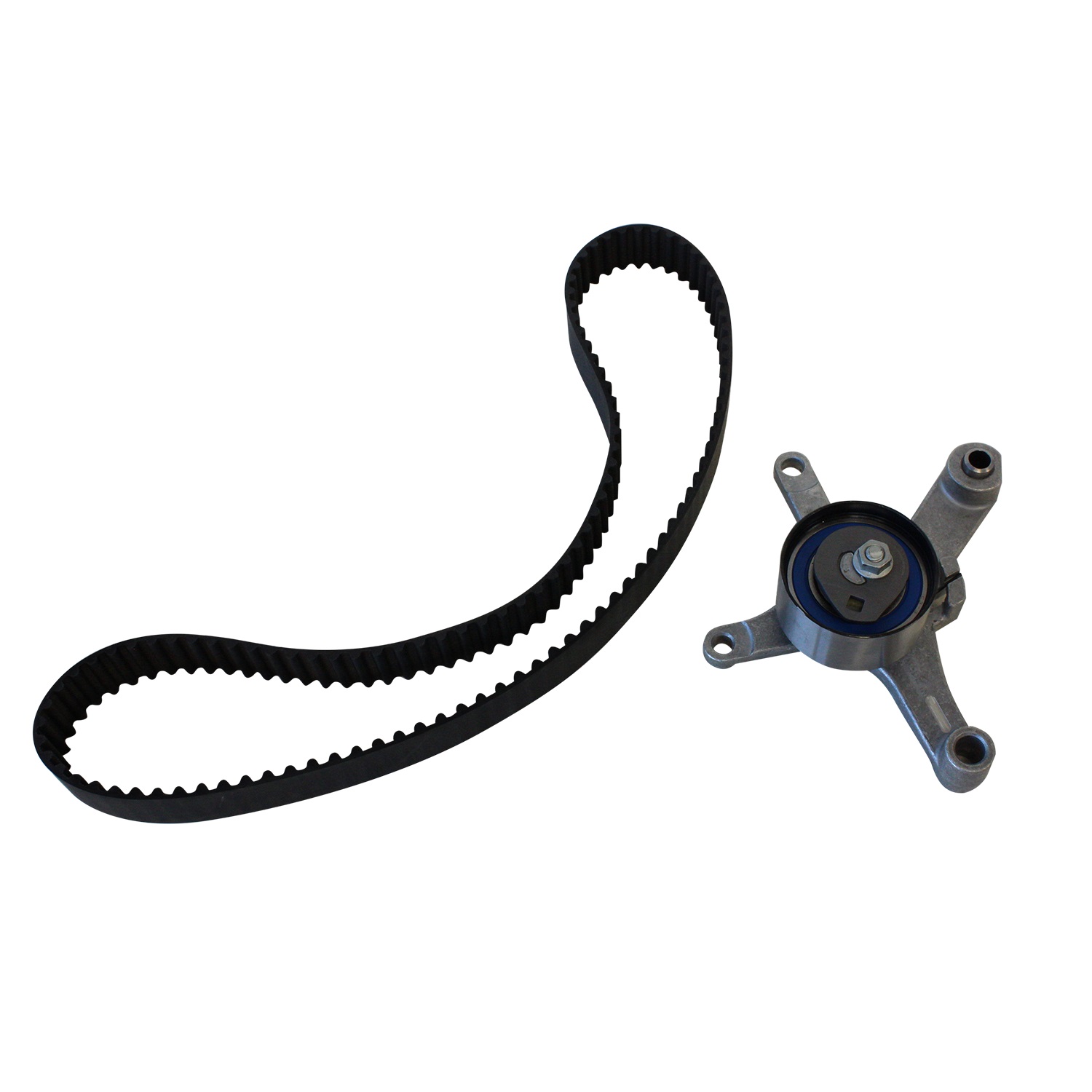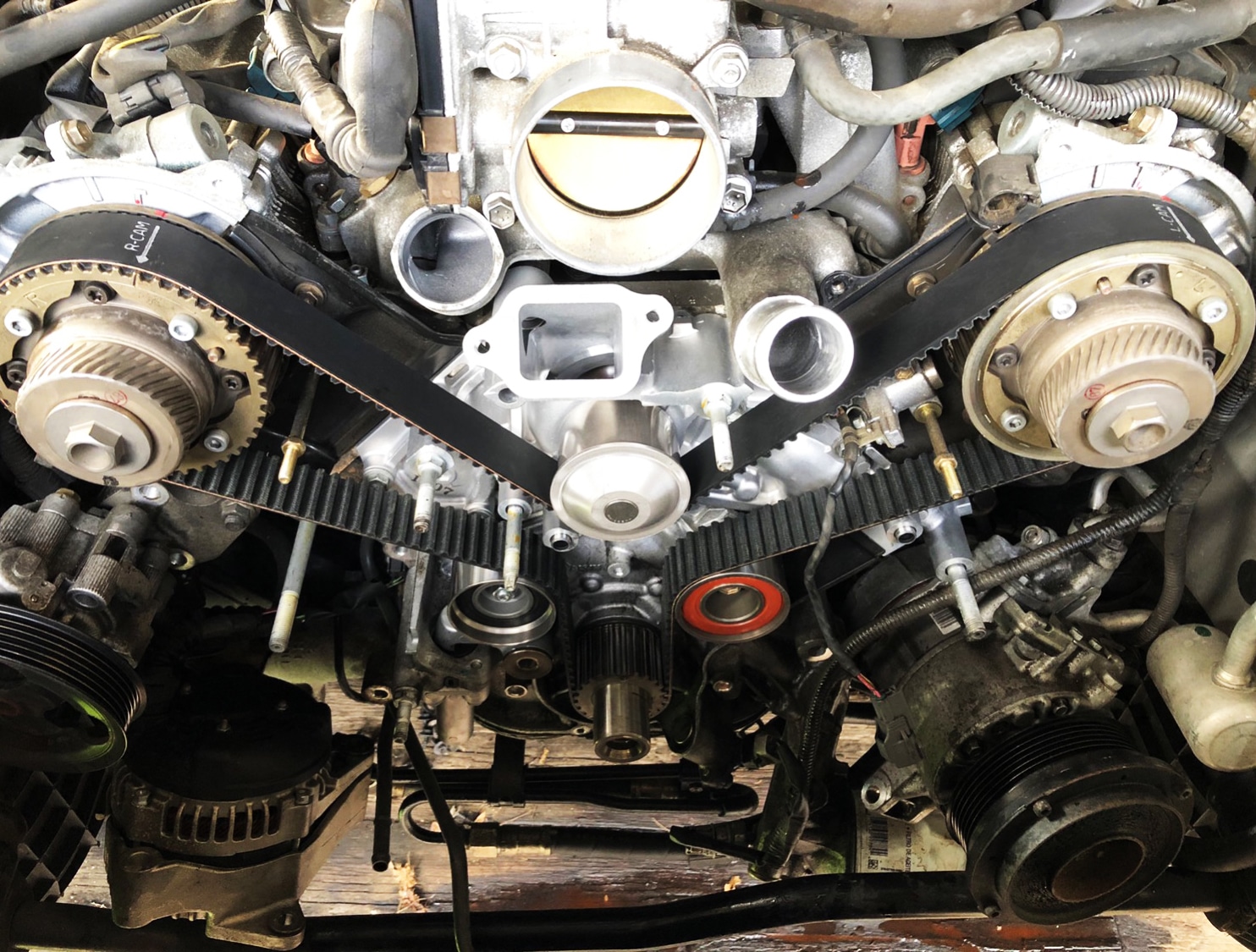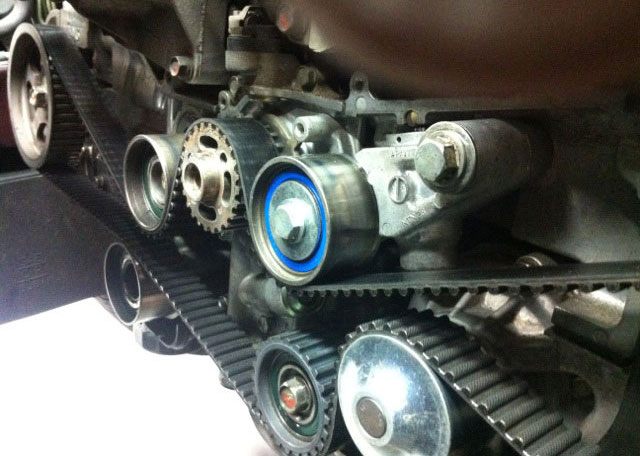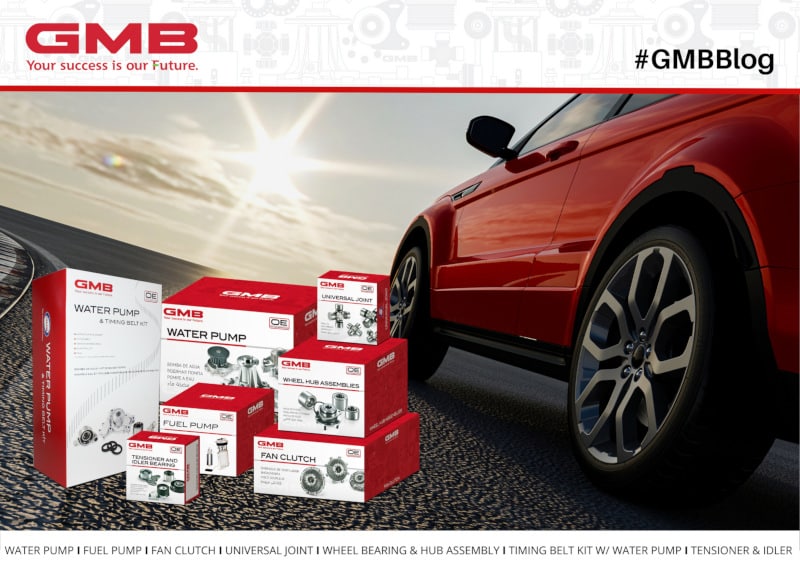Is It The Timing Belt The Tensioner Or The Idler Pulley?
When an engine has timing belt issues, the root cause is not always the timing belt. It may be the timing belt tensioner or the idler pulley. It’s important to know which part is failing. That way, you can replace the failing part (and any other affected parts) to bring the timing belt assembly back to working order.

Finding the root of the problem (rather than treat the symptoms) is a surefire way to cut down on customer comebacks. For example, a failed timing belt tensioner will make the timing belt loose and may lead to valve timing issues. Simply replacing the timing belt won’t do the trick. It will temporarily fix the problem, but the timing belt will become loose again because the tensioner is still unable to keep the belt tight. In that case, the customer will bring their car back and your shop will waste time and resources fixing the problem again.
So it’s best to get to the bottom of the issue when a customer comes in with timing belt issues. You want to check all three parts and replace any of these parts that are bad.
Why You Need To Check All Three Parts
Most likely you’ll need to replace more than one part. For example, a failed timing belt tensioner can ruin the timing belt. When the timing belt becomes misaligned, the idler pulley can wear out prematurely. So if you find the root of the problem, you still want to check all the parts anyway. This way, you’ll know exactly which parts will need replacing.
How To Check The Timing Belt

To check the timing belt, you need to give it a close visual inspection. Grab a flashlight and then thoroughly inspect the timing belt. Be sure to inspect both the smooth side and and the toothed side. Here’s what you need to look for:
- Cracks (even tiny cracks) on the smooth side
- Only a couple of cracks are OK. You want to look for a lot of cracking on the surface.
- Missing rubber pieces
- Broken teeth
- Even one broken tooth can be catastrophic. For example, it can affect the valve timing. So if the belt has one broken tooth, replace it.
- Free play
- Twist the belt. If you can turn it more than halfway around, it has too much free play.
If you need to replace the timing belt, here are a few tips to help the replacement go smoothly.
How To Check The Timing Belt Tensioner

When the timing belt tensioner fails, it loses tension. So it’s pretty easy to determine whether a timing belt tensioner has gone bad.
When you have access to the timing belt tensioner, check and see if it has enough tension. Also, look for dirt and dust build-up on the timing belt tensioner. When there’s too much build-up, the pulley will no longer able to put enough pressure on the timing belt. Last, but not least, look for a hydraulic oil leak. If you find a leak, the tensioner no longer has enough tension. When in doubt, it’s better to err on the side of caution and replace the timing belt tensioner anyway.
If you find that the timing belt tensioner is bad, here are some tips on explaining tensioner failure to your customers.
How To Check The Idler Pulley
When the idler pulley fails, it can no longer properly guide the timing belt. So when the idler pulley fails, the timing belt fails too. Checking the idler pulley is pretty easy. All you need to do is release tension from the timing belt, find the idler pulley, and then look for the following issues:
- Corrosion
- The idler pulley needs to have a smooth surface to work well.
- Excessive looseness
- When the idler pulley is too loose, or can wobble, it can vibrate and knock the timing belt off.
- Too much friction
- The idler pulley needs to move freely to work properly.
GMB Timing Belt Kit With Water Pump
The amount of time and labor required to replace a timing belt would warrant replacing all parts involved. This includes the tensioner, idler pulley, water pump, and possibly any leaking oil seals, (camshaft and crankshaft). Should any of these parts fail, serious engine damage can and will occur. All these parts are included in your GMB Timing Belt Kit.
We would love to hear your feedback! Contact us to share your thoughts!
MORE CONTENT
Stay current!
Sign up here to get the latest news
and updates on all things GMB.
Sign Up To Receive GMB News & Updates!

